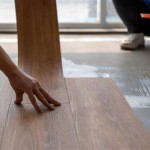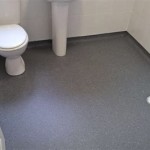Having water under your laminate flooring can be a nightmare. Not only can it cause the flooring to warp and buckle, but it can create a safety hazard as well. That’s why it’s important to take steps to address any water damage as soon as you discover it. Here are a few tips on what to do when you discover water under your laminate flooring.
1. Identify the Source of the Water
The first step is to identify the source of the water. Is it coming from a leaking pipe, a toilet overflow, or a natural disaster? Once you know the source, you can take steps to stop the water from entering your home. If the source of the water is a natural disaster, you may need to call a professional to help you repair the damage.
2. Remove Any Water That Has Already Leaked Under the Floor
Once you have identified the source of the water, it’s time to start removing any water that has already leaked under the floor. The best way to do this is to use a wet vacuum or a mop and bucket. Make sure to wear protective clothing and goggles to avoid getting wet. You may also need to use a dehumidifier to help speed up the drying process.
3. Clean and Disinfect the Affected Area
Once the water has been removed, you will need to clean and disinfect the affected area. This is important to prevent mold and mildew from forming. Use a mild cleaning solution and a scrub brush to clean the affected area and then use a disinfectant to kill any remaining bacteria. Make sure the area is completely dry before you start to repair the damage.
4. Repair Any Damage to the Floor
Once the area is dry and clean, you will need to repair any damage to the floor. If the flooring is severely warped, you may need to replace it. However, if the damage is minimal, you can try to repair it by applying a patching compound or epoxy. Make sure to follow the manufacturer’s instructions for the best results.
5. Inspect for Any Further Damage
Before you start to put the floor back together, you should inspect for any further damage. Look for any signs of mold or mildew, as well as any structural damage. If you find any further damage, you should call a professional to help you repair it.
6. Reinstall the Laminate Flooring
Once you are sure that the floor is dry and any damage has been repaired, you can start to reinstall the laminate flooring. Make sure to use the right tools and materials to ensure a good fit. Start by laying down a thin layer of adhesive and then position the laminate planks. Secure them in place with nails, screws, or staples.
7. Take Preventive Measures to Avoid Future Damage
The last step is to take preventive measures to avoid future damage. Make sure to inspect the flooring regularly for any signs of water damage and address any issues as soon as possible. You should also check for any leaks or cracks in the walls or foundations and fix them immediately. Taking these steps can help you keep your laminate flooring in top condition.















Related Posts








